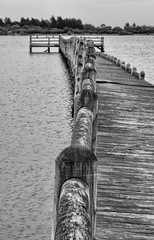
Search
Images for CEISMIC; more images...
Up in smoke: Christchurch Destructor
Articles, Christchurch uncovered
At the turn of the 20th century, Christchurch’s rubbish disposal underwent a fiery transformation. After 50 years of settlement, Christchurch was facing a rubbish crisis that was starting to get people worried. The council’s weekly kerbside rubbish collection service, which … Continue reading →
Canterbury Corner
Articles, Christchurch uncovered
Down on the corner of a Lyttelton street, there was a butcher, a courier and a large family to meet… Or at least, one could have met them about 150 odd years ago when three early settler families in Lyttelton … Continue reading →
Long-drops from long ago
Articles, Christchurch uncovered
It’s something so mundane that it forms a part of our everyday lives and it’s as inescapable as death and taxes. Even though we spoke of it last week on the blog, it’s something people don’t often speak about and … Continue reading →
Keen to have a cuppa
Articles, Christchurch uncovered
This week on the blog, a bunch of teacups classified according to how cute I think they are. It won’t be as fun as talking to God on the porcelain telephone, but teacups also give us heaps of scope! Thinking … Continue reading →
2017: The year that was
Articles, Christchurch uncovered
Yet another year gone! It’s been a strange one, out there in the world, but here at Underground Overground it’s been a year of excavation, discoveries, stories and all things archaeological. In the proper spirit of history, let’s take a … Continue reading →
Life’s a beach
Articles, Christchurch uncovered
It’s that time of year again, the summer season is upon us, and this year has really has brought the heat! With much of the country sweltering in the late 20s and early 30s lately, it’s made us appreciate the … Continue reading →
A little more Lyttelton history
Articles, Christchurch uncovered
During recent earthquake repairs at a residential property on well-known Sumner Road in Lyttelton, our archaeologists uncovered a small assemblage of artefacts that represented everyday Victorian household items. At first glance these appeared a somewhat ordinary – but when Lydia … Continue readi...
Government Building Worcester Street – Building for the Future
Articles, Lost Christchurch
The construction of government buildings have long attracted opinion and criticism and the Italian Renaissance style Government Buildings on the corner of Worcester street and Cathedral Square were…
Rebuild actual start date map
Articles, UC QuakeStudies
A map showing the actual construction start dates.
SCIRT's awards roll call
Articles, UC QuakeStudies
A document which lists the awards won by SCIRT.
A Dunedin faultline
Audio, Radio New Zealand
A fault line on Dunedin's doorstep could cause an earthquake as destructive as 2010's Canterbury quake.
The genesis of SCIRT - new era in disaster recovery
Articles, UC QuakeStudies
A document which describes the formation of SCIRT.
Well-grounded solution to soggy sites
Articles, UC QuakeStudies
A document which describes best practice for dewatering guidelines.
QuakeStory 789
Articles, UC QuakeStudies
A story submitted by Alice to the QuakeStories website.
Real asset in innovative damage assessment
Articles, UC QuakeStudies
A document which outlines SCIRT's post-earthquake asset assessment process.
Peak performance coaching at SCIRT
Articles, UC QuakeStudies
A document which outlines SCIRT's use of peak performance coaches.
What is SCIRT?
Articles, UC QuakeStudies
An article that explains the innovative work of SCIRT in a post-disaster environment.
Kids and post-quake anxiety
Audio, Radio New Zealand
Kim Button of the Neighbourhood Trust talks about the emotional scars Christchurch child are bearing after the earthquakes.
Families attend Chch earthquake memorial unveiling
Audio, Radio New Zealand
The Canterbury Earthquake National Memorial was unveiled to the public at a memorial attended by more than 3000 people.
Early involvement builds successful framework
Articles, UC QuakeStudies
A document which discusses the importance of the ECI process at SCIRT.
'REAL' response to resource roles
Articles, UC QuakeStudies
A document which outlines SCIRT's best practice approach to recruitment and training.
Cultivate Christchurch
Audio, Radio New Zealand
Earthquake demolition work in Christchurch has made way for an urban farm that is equipping young people with life and work skills.
SCIRT work holds back the tides
Articles, UC QuakeStudies
A document which describes how the new Beachville Road seawall was built.
Having a blast in the past
Articles, UC QuakeStudies
A document which describes SCIRT's discoveries and processes regarding archaeological finds on worksites.
Tic TOC: Time is money for SCIRT estimates
Articles, UC QuakeStudies
A document which describes the SCIRT estimates process and outcomes.
Brighter Future: Govt's Chch earthquake decisions
Audio, Radio New Zealand
'Is this the Brighter Future?': Rachel Graham looks at how the Government's decisions have impacted the lives of people in Christchurch.
Mind the gap: more workers wanted
Articles, UC QuakeStudies
A document which describes the process that SCIRT took to fill its operational workforce gap.
Civil Contractors' Environmental Guide
Articles, UC QuakeStudies
A document which provides simple, easy to understand environmental advice and guidance for civil construction contractors.
Re-start container mall wanted in Kaikōura
Audio, Radio New Zealand
Kaikōura's struggling business community wants a container mall similar to Christchurch's re-start mall set up after the Canterbury earthquakes.
Justice for CTV families
Audio, Radio New Zealand
The families of those who died in the CTV building collapse in Christchurch's 2011 earthquake say they will continue to fight for justice.



